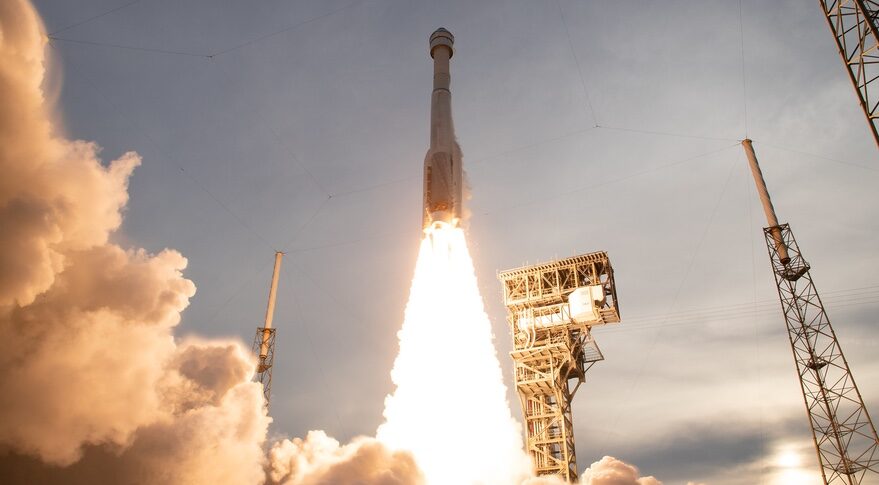
Starliner launches to remain on Atlas 5 (Image Credit: Space News)
WASHINGTON — Boeing and United Launch Alliance say they remain committed to launching future CST-100 Starliner commercial crew missions on Atlas 5 rockets even after that vehicle is effectively retired for other missions.
As with the Orbital Flight Test (OFT) mission in late 2019, an Atlas 5 launched Starliner on the OFT-2 mission May 19. Boeing has a contract with ULA to launch both the Crew Flight Test (CFT) mission, the first Starliner mission to carry astronauts, and six operational or post-certification missions on Atlas 5 vehicles as well.
With NASA planning to alternate between Boeing’s Starliner and SpaceX’s Crew Dragon for International Space Station crew rotation missions once Starliner is certified, each flying once a year, it implies that Atlas 5 launches of Starliner could continue well into the latter half of the decade. ULA, which has stopped selling Atlas 5 launches, has previously discussed phasing out Atlas 5 in favor of Vulcan Centaur around the middle of the decade.
NASA’s Aerospace Safety Advisory Panel raised concerns about how delays in Starliner’s development might affect the availability of the Atlas 5 at its May 12 meeting. “Any further delays with Starliner launches would exacerbate this concern,” said David West, a member of the panel, adding that certifying Vulcan for crewed launches “could take years.”
At a May 17 prelaunch briefing, NASA and ULA officials said that all the remaining Starliner missions under contract, including CFT and the six post-certification missions, would remain on Atlas 5 regardless of schedule.
“From a resource perspective, we have measures in place to protect the talent and to ensure we retain the critical skills to be able to fly an Atlas as late as we need to,” said Gary Wentz, vice president of government and commercial programs at ULA. “We’re in conversations with Boeing and other customers for that capability.”
Even at a pace of one mission a year, though, and with no other customers for Starliner, the supply of Atlas vehicles would be exhausted before the projected retirement of the ISS in 2030. “We would look, toward the end of the decade, to award other flights, or have other flights potentially for Boeing,” said Steve Stich, NASA commercial crew program manager. “We would look for a new system.” He added NASA would support human-rating a new system “when Boeing and ULA are ready.”
ULA has not announced plans to human-rate Vulcan. However, Wentz said that “over 90%” of Vulcan Centaur hardware is already flying on Atlas 5, simplifying any human-rating process. One key change, he said, would be transferring the emergency detection system currently on Atlas, which alerts the spacecraft of any problems with the rocket to trigger its abort system, to Vulcan. The other major change, he said, would be human-rating the BE-4 engines used on Vulcan’s first stage.
Boeing may not be the only customer, or even the first, to seek human-rating of Vulcan. Sierra Space is planning a crewed version of its Dream Chaser cargo spacecraft. The cargo version will launch on Vulcan rockets starting in 2023, and a crewed version could be ready as soon as 2026.








